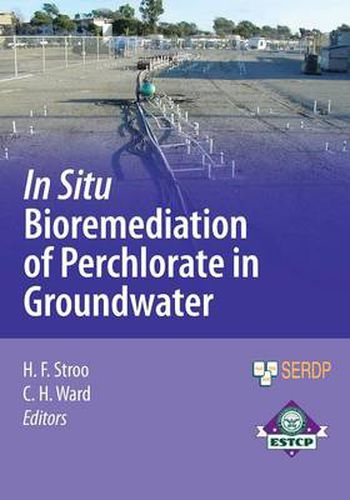Readings Newsletter
Become a Readings Member to make your shopping experience even easier.
Sign in or sign up for free!
You’re not far away from qualifying for FREE standard shipping within Australia
You’ve qualified for FREE standard shipping within Australia
The cart is loading…






This title is printed to order. This book may have been self-published. If so, we cannot guarantee the quality of the content. In the main most books will have gone through the editing process however some may not. We therefore suggest that you be aware of this before ordering this book. If in doubt check either the author or publisher’s details as we are unable to accept any returns unless they are faulty. Please contact us if you have any questions.
In the late 1970s and early 1980s, our nation began to grapple with the legacy of past disposal practices for toxic chemicals. With the passage in 1980 of the Comprehensive Environmental Response, Compensation, and Liability Act (CERCLA), commonly known as Superfund, it became the law of the land to remediate these sites. The U. S. Department of Defense (DoD), the nation’s largest industrial organization, also recognized that it too had a legacy of contaminated sites. Historic operations at Army, Navy, Air Force, and Marine Corps facilities, ranges, manufacturing sites, shipyards, and depots had resulted in widespread contamination of soil, groundwater, and sediment. While Superfund began in 1980 to focus on remediation of heavily contaminated sites largely abandoned or neglected by the private sector, the DoD had already initiated its Installation Restoration Program in the mid 1970s. In 1984, the DoD began the Defense Environmental Restoration Program (DERP) for contaminated site assessment and remediation. Two years later, the U. S. Congress codified the DERP and directed the Secretary of Defense to carry out a concurrent program of research, development, and demonstration of innovative remediation technologies. As chronicled in the 1994 National Research Council report, Ranking Hazardous-Waste Sites for Remedial Action , our early estimates on the cost and suitability of existing technologies for cleaning up contaminated sites were wildly optimistic. Original estimates, in 1980, projected an average Superfund cleanup cost of a mere $3.
$9.00 standard shipping within Australia
FREE standard shipping within Australia for orders over $100.00
Express & International shipping calculated at checkout
This title is printed to order. This book may have been self-published. If so, we cannot guarantee the quality of the content. In the main most books will have gone through the editing process however some may not. We therefore suggest that you be aware of this before ordering this book. If in doubt check either the author or publisher’s details as we are unable to accept any returns unless they are faulty. Please contact us if you have any questions.
In the late 1970s and early 1980s, our nation began to grapple with the legacy of past disposal practices for toxic chemicals. With the passage in 1980 of the Comprehensive Environmental Response, Compensation, and Liability Act (CERCLA), commonly known as Superfund, it became the law of the land to remediate these sites. The U. S. Department of Defense (DoD), the nation’s largest industrial organization, also recognized that it too had a legacy of contaminated sites. Historic operations at Army, Navy, Air Force, and Marine Corps facilities, ranges, manufacturing sites, shipyards, and depots had resulted in widespread contamination of soil, groundwater, and sediment. While Superfund began in 1980 to focus on remediation of heavily contaminated sites largely abandoned or neglected by the private sector, the DoD had already initiated its Installation Restoration Program in the mid 1970s. In 1984, the DoD began the Defense Environmental Restoration Program (DERP) for contaminated site assessment and remediation. Two years later, the U. S. Congress codified the DERP and directed the Secretary of Defense to carry out a concurrent program of research, development, and demonstration of innovative remediation technologies. As chronicled in the 1994 National Research Council report, Ranking Hazardous-Waste Sites for Remedial Action , our early estimates on the cost and suitability of existing technologies for cleaning up contaminated sites were wildly optimistic. Original estimates, in 1980, projected an average Superfund cleanup cost of a mere $3.